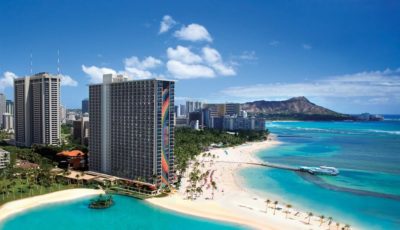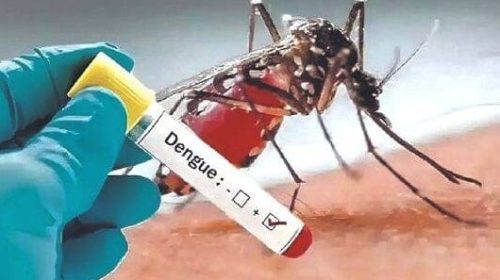Hawaii Hotel Occupancy Rate in Downward Spiral
In March 2020, Hawaii hotels statewide reported substantial declines in revenue per available room (RevPAR), average daily rate (ADR), and occupancy compared to March 2019 as tourism began to be impacted significantly by the COVID-19 pandemic.
According to the Hawaii Hotel Performance Report published by Hawaii Tourism Authority’s (HTA) Research Division, statewide RevPAR decreased to $125 (-44.4%), ADR dipped to $280 (-1.7%), and occupancy fell to 44.5 percent (-34.3 percentage points) in March.
The report’s findings utilized data compiled by STR, Inc., which conducts the largest and most comprehensive survey of hotel properties in the Hawaiian Islands.
In March, Hawaii hotel room revenues statewide declined by 44.9 percent to $207.3 million. Room demand was 43.9 percent lower than the same period last year. Room supply decreased by only 0.8 percent year-over-year. However, a number of properties took rooms out of service at the end of the month in response to the COVID-19 pandemic. This inventory is not reflected in the available room count.
All classes of Hawaii hotel properties statewide reported RevPAR losses in March compared to a year ago. Luxury Class properties earned RevPAR of $219 (-50.2%), with ADR of $573 (-1.9%) and occupancy at 38.3 percent (-37.2 percentage points). Midscale & Economy Class properties earned RevPAR of $93 (-36.3%), with ADR of $173 (-3.9%) and occupancy at 53.8 percent (-27.4 percentage points).
All of Hawaii’s four island counties reported lower RevPAR and in the Hawaii hotel occupancy rate. Maui County hotels led the state overall in RevPAR at $196 (-41.2%), with ADR of $414 (-2.6%) and occupancy at 47.4 percent (-31.1 percentage points) in March. Maui’s luxury resort region of Wailea earned RevPAR of $291 (-49.9%), ADR of $628 (-2.1%), and occupancy at 46.4 percent (-44.3 percentage points).
Oahu hotels reported the lowest March RevPAR among the counties at $94 in March. ADR fell to $218 (-4.8%) and occupancy declined to 42.9 percent (-37.1 percentage points). Waikiki hotels earned $89 (-50.0%) in RevPAR with ADR at $214 (-4.0%) and occupancy of 41.7 percent (-38.3 percentage points).
Hotels on the island of Hawaii earned RevPAR of $126 (-41.4%) in March, with lower occupancy (46.1 percent, -32.7 percentage points) and no change in ADR ($274, +0.0%). Properties on the Kohala Coast reported RevPAR of $181 (-41.2%), with lower occupancy of 44.4 percent (-35.7 percentage points) offsetting ADR growth to $409 (+6.0%).
Kauai hotels earned RevPAR of $135 (-34.2%) in March, with higher ADR ($296, +4.0%) offset by lower occupancy of 45.7 percent (-26.5 percentage points).
First Quarter 2020
Through the first three months of 2020, Hawaii hotels statewide reported modest ADR growth and lower Hawaii hotel occupancy rate, which resulted in lower RevPAR compared to the first quarter of 2019. Statewide RevPAR declined to $216 (-8.0%), with ADR of $306 (+4.9%) and occupancy of 70.6 percent (-9.9 percentage points).
For the first quarter, Hawaii hotel room revenues fell by 8.7 percent to $1.04 billion compared to the $1.14 billion earned in the first quarter of 2019. There were approximately 38,000 fewer available room nights (-0.8%) and approximately 507,000 fewer occupied room nights (-12.9%) compared to a year ago. Several hotel properties across the state were closed for renovation, had rooms out of service for renovation, were closed at the end of March or had rooms out of service due to COVID-19 impacts.
All classes of Hawaii hotel properties statewide reported RevPAR declines in the first quarter of 2020. Luxury Class properties reported RevPAR of $398 (-11.6%) with ADR of $619 (+4.2%) and occupancy of 64.3 percent (-11.5 percentage points). At the other end of the price scale, Midscale & Economy Class hotels reported RevPAR of $149 (-5.0%) with ADR of $196 (+4.4%) and occupancy of 75.8 percent (-7.4 percentage points).
Comparison to Top U.S. Markets
In comparison to top U.S. markets during the first quarter, the Hawaiian Islands earned the highest RevPAR at $216 followed by the Miami/Hialeah market at $181 (-11.7%) and San Francisco/San Mateo at $146 (-29.9%). Hawaii also led the U.S. markets in ADR at $305 followed by Miami/Hialeah and San Francisco/San Mateo. The Hawaiian Islands topped the country for occupancy at 70.6 percent, followed by Tampa/St. Petersburg, FL and Miami/Hialeah.
Hotel Results for Hawaii’s Four Counties
Hotel properties in Hawaii’s four island counties all reported RevPAR decreases in the first quarter of 2020. Maui County hotels led the state overall in RevPAR at $316 (-6.6%), with ADR at $464 (+6.9%) and occupancy of 68.2 percent (-9.9 percentage points).
Kauai hotels earned RevPAR of $219 (-1.9%), with ADR at $316 (+4.3%) and occupancy of 69.4 percent (-4.4 percentage points).
Hotels on the island of Hawaii reported a decline in RevPAR to $215 (-4.7%), with ADR at $305 (+6.9%) and occupancy of 70.4 percent (-8.6 percentage points).
Oahu hotels earned RevPAR of $174 (-10.3%), with ADR at $243 (+3.3%) and occupancy of 71.9 percent (-11.0 percentage points).
Comparison to International Markets
When compared to international “sun and sea” destinations, Hawaii’s counties were in the upper half of the group for RevPAR in the first quarter of 2020. Hotels in the Maldives ranked highest in RevPAR at $438 (-18.0%) followed by Maui County and Aruba
($266, -24.2%). Kauai ranked fifth, the island of Hawaii ranked sixth, and Oahu ranked eighth.
The Maldives also led in ADR at $713 (+6.3%) in the first quarter, followed by French Polynesia at $483 (-2.7%) and Maui County. Kauai, the island of Hawaii, and Oahu ranked sixth, seventh, and eighth, respectively.
Oahu led in occupancy for sun and sea destinations in the first quarter, followed by Puerto Vallarta (71.1%, -9.3 percentage points). The island of Hawaii, Kauai and Maui County ranked third, fourth, and fifth, respectively.




